Participants
Curators

Eva Bakkeslett (NO)
Artist/CURATOR
Eva Bakkeslett is an artist, curator and cultural activist. Through her work, she conveys connections between nature and culture as a living organism. Communication across species boundaries, bacterial cultures and fermentation as a process and metaphor is central to her work and disseminated in the form of socially engaged and inclusive projects. Her work provides insight into poetic, sensory and transformative processes where new perspectives are revealed and materialised. Eva is curating The Conference of the Birds with Ulrika Jansson.

Ulrika Jansson (SE)
Artist/CURATOR
Ulrika Jansson’s artistic practice navigates the confluence of place, human interaction, and ecology. She engages in interdisciplinary projects that bring global ecological issues into a local context processed through artistic methods. Her diverse works, showcased in multi-part audiovisual installations, blend sculpture, stop-motion film, and sound techniques. These pieces often incorporate handicraft techniques, plant materials and natural phenomena, enhancing engagement with the more-than-human world.
www.ulrikajansson.com
@ulrika.jansson_

Ulla Taipale (FI)
CURATOR
Ulla Taipale is Finnish curator and artist who works internationally. She is specially interested in enhancing cultural and ecological biodiversity through art & science interventions, and in building bridges between art and science communities, facilitating dialogue between artists, creators, scientists, and the general public. She has a BSc in Environmental Engineering and an MA in Visual Cultures, Curating and Contemporary Art from Aalto University, Finland. She works currently as Art&Science curator of Climate Whirl Art program at INAR / University of Helsinki.
www.capsula.fi
melliferopolis.net
www.theotherside.fi
www.climatewhirl.fi

Oleg Koefoed (DK)
Action philosopher/CURATOR
Oleg Koefoed is a multidisciplinary ‘actionist’ studying and playing with how to raise human awareness toward regenerative relations with each other and the worlds they inhabit. After having co-created units working with culture and transdisciplinarity, sustainability, and urban nature, he now leads the Center for Vitalism and Regenerative Transformation, based in Copenhagen. His approach involves co-creating sites for learning, action-philosophical research, commoning through conversations, writings, and listening, as well as training of organisations and leaders in the public and private sectors.
Artists, researchers & advisors
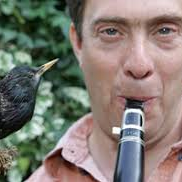
David Rothenberg (US)
philosopher / ARTIST
David Rothenberg is a professor of philosophy and music at the New Jersey Institute of Technology. He makes music live with the sounds of nature, records music with other species, and writes books and makes films about the process. His books and recordings in the field of interspecies music include Why Birds Sing on birds, Thousand Mile Song on whales, and Bug Music on insects. These works have been translated into many foreign languages and have been the subject of documentary films and radio programs in many countries, including Finland, Germany, France, Denmark, the UK and the United States.
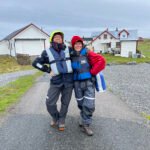
Riitta Ikonen & Karoline Hjorth (FI/NO)
ARTISTS
Hjorth & Ikonen have collaborated since 2011 on publications and projects including Eyes as Big as Plates (ongoing). Starting out in 2011 studying folkloric explanations to natural phenomenons, the ongoing collaborative series Eyes as Big as Plates has evolved into a continual search for modern human’s belonging to nature. With the goal of combining the powers of art, science and activism, the Norwegian-Finnish artist duo is increasingly portraying people who are actively engaged in the climate emergency discourse, exploring the potential of art to propel actionable system change.
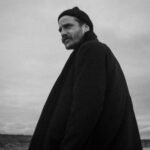
Christoph Matt (AU)
DESIGNER / ARTIST
Christoph Matt is an Austrian eco-social designer and founder of the internationally awarded Studio Matt. A nomadic studio for sustainable design with a focus on the living environment and social issues, currently based in Vienna. The projects and works are always dedicated to the interplay of planet earth, the human and more-than-human.

Laura Naukkarinen (FI)
Composer / Artist
Laura Naukkarinen is a Finnish composer and performer who works with analogue synthesizers, acoustic sounds and field recordings. Her work comprises a range of solo albums under the moniker Lau Nau, scores for films and performing arts, multi channel sound installations and workshops.
launau.com
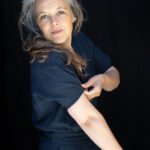
Laura Winge (DK)
BIOLOGIST / ARTIST
Laura Winge is a visual artist and design anthropologist PhD. Her practice-based research frequently centers on codesign as ways of engaging, connecting and exploring dialogues with humans and others, sites and environmental networks.
www.laurawinge.dk

Kåre Grundvåg (NO)
Artist
Kåre Grundvåg Has his BA and MA from the Academy of Arts in Tromsø and is currently a PhD candidate in artistic research at UMAK, Tromsø and KMD, Bergen.
Through various sculptural techniques and process-based projects, Grundvåg explores a non-human architecture.
Material experimentation, bio-mimetics and traditional knowledge are included as elements in the practice, with the coastal landscape of Northern Norway as a frame of reference. Kåre was born in Tromsø, where he lives and works. Kåre has been part of the kittiwake hotels since the beginning of the collaboration.
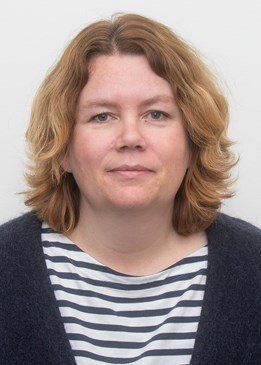
Tone Reiretsen (NO)
PhD RESEARCHER
Tone works as a researcher at the Norwegian Institute for Nature Research (NINA) in Tromsø. Her interests are in the area of the impact of climate and human activities on seabirds demography and population dynamics, and how seabirds are adapting to a changing world. She is monitoring auks, gulls and shags on the Hornøya birdcliff, and urban kittiwake populations in Tromsø and Vardø. At present she specifically works with the impact of storms and fishery on adult survival of puffins and kittiwake. Tone has been invoved as an advisor in the kittiwake collaboration in Tromsø since the beginning.

Irene Kaltenborn (NO)
ARTIST
Irene Kaltenborn grew up in Honningsvåg and works between Tromsø and Malmö. She holds an MA from Malmö Art Academy, working primarily with film and video installations. Within the possibilities and limitations of the film medium, she uses her philosophical and existential starting point to explore themes relating to home, belonging and our complex relationship with nature. Much of her work is an examination of how we interact with our fellow species, deeply inspired by environmental philosophy and ecofeminism. In recent years, she has been deeply engaged in politics and caring for the kittywakes and other seagull species in Northern Norway, which has triggered a number of works and been a breeding ground for future projects.

Andris Fågelviskare (SE)
Birdwhisperer
Self taught birdwhisperer who imitates 130+ bird species from all over the world. Andris is a bird and nature activist and continues his journey to teach about the importance of listening and acting mindfully as humans on this multi-species earth.Andris is a spokesperson for the birds and has performed his songs on numerous different media.
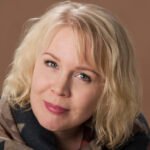
Karoliina Lummaa (FI)
literary scholar
Karoliina Lummaa is a postdoctoral researcher specialised in literary studies and environmental humanities. Currently, she is affiliated with the University of Turku and to the independent BIOS Research Unit. Lummaa’s publications include research articles and co-edited anthologies on ecocriticism and posthumanism. She is the author of two monographs focusing on Finnish bird poetry and bird cultures.

Thomas Holm Carlsen (NO)
BIOLOGIST
Thomas is a researcher at NIBIO at Tjøtta (Nordland) and has a degree in biology in terrestrial ecology from NTNU, Trondheim. Thomas has worked with eider ducks and the culture of collecting eider down since 2007. He has led several Nordic cooperation projects regarding the unique eider tradition and has lived and worked with eider ducks in Iceland for two years (2013-2015). From 2016 to date, he has monitored Eivind’s eider colony on Selvær by capturing, tagging, measuring and putting on loggers (GLS technology) for the registration of migratory routes in the winter.
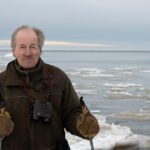
Jan Eerala (Fi)
Artist / Photographer
Jan Eerala, born in 1948 and sadly passed away in the autumn of 2024. He was a self taught visual artist working with video, sound and photography. His lifelong production mirrors his close-knit relationship to nature and between nature and humans. Often with a sense of rustic humor. He lived and worked in the town and area around Pori in Western Finland,
www.eerala.com
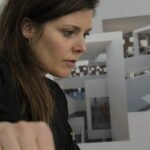
Maiken Vibe Bauer (DK)
ARTIST
Maiken Vibe Bauer is a sound artist and researcher based in Copenhagen. MVB holds a M.Sc in Chemistry and M.sc. in Cultural Encounters and has been working with sound, field recordings and sonic practices since 2008. In her work MVB explores how sounds shape our world, how we listen and how sonic experiences can open up spaces for attentiveness, sensing and relating to the living world. Taking point of departure in meticulous field recordings, archival sounds and scientific data she investigates the often complex and unnoticed sounds, and nonhuman voices that surrounds us.
Alongside her own practice she collaborates and co-creates regularly with other artists, performers, choreographers, scientists and researchers. MVBs works span from multi-channel compositions, installations, curated listening spaces, performative sound walks to more documentary forms such as archives, registrants and audio essays.
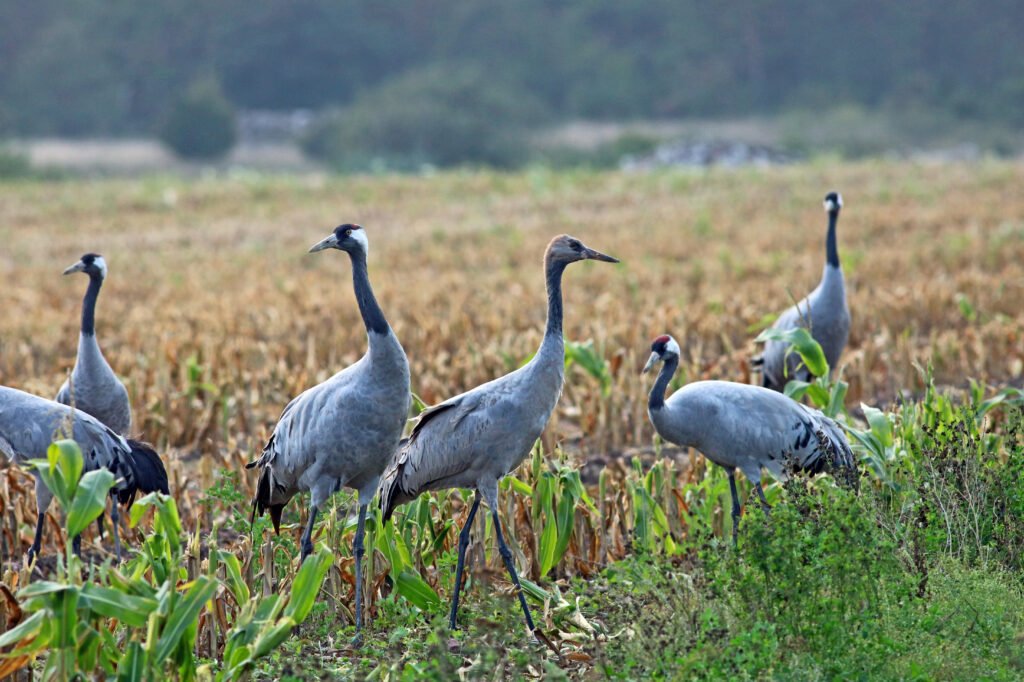
Common Crane (Grus grus)
Gruidae Bird
We are the most common crane in Europe and got our name from Carl Linnaeus in 1758. Most of us migrate and breed in Russia, Finland and Sweden. In the winter we mostly live in Portugal, Spain and northern Africa. We like it best on treeless moors, bogs, swamps, close to small lakes or pools. We are great performers and our claim to fame is our breeding dance. Our population is gradually increasing, and we are around 500000 Common cranes worldwide.
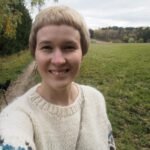
Katri Aholainen (FI)
Doctoral Student, Literary Studies and Creative Writing
Katri Aholainen is currently a doctoral student at Turku University. In her master’s thesis, she wrote about the involvement of non-human actors in art-making processes. Her material included Yrjö Kokko’s works Laulujoutsen (1950) and They Come Back (1954). Alongside human beings, whooper swans are emerging as important actors in the works, which were completely disappearing from Finland at the time of their publication. Thanks to the size of the swan books, the Finnish attitudes towards the swans changed and the living conditions of the swans began to improve. In her dissertation, she reflected on how whooper swans participated in the process of creating books to save them.
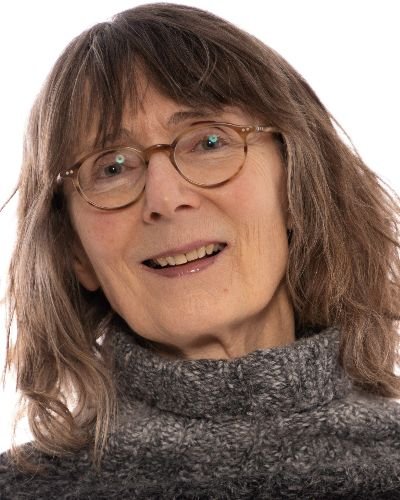
Bente Sundsvold (NO)
associate professor RESEARCHER
Bente a senior lecturer in visual anthropology at the University of Tromsø. In her doctoral thesis ‘The Nordic bird care’, she became well acquainted with the close relationships people along the coast have with seabirds, and vice versa. Bente has done research in a number of externally funded projects related to more-than-human perspectives, empowerment of local knowledge in management, research, and alliance building addressing environmental challenges. Her most recent interdisciplinary project is about seabirds; FUGLAN VEIT (The Birds Know)

Blyth’s reed warbler (Acrocephalus dumetorum)
reed warbler
We breed from the Baltic Sea in eastern Europe almost as far as Lake Baikal in Siberia, with a southern isolated population in Central Asia. In winter we fly to India, Sri Lanka, Nepal, Bangladesh and Myanmar. We like to stick together in pairs, but sometimes we have several partners. We like it best on our own and stick to our fairly large territories. Our nest are cup shaped, made from plant material and spiders’ webs and we place them 20 to 60 cm above the ground. We are great singers and our jazzy tunes have been made into this super animation by an Estonian fan of ours!

Maria Matantseva (RU)
BIOLOGIST Researcher
Maria Matantseva is an ornithologist, PhD, working at the Institute of Biology, Karelian Research Centre, Russian Academy of Sciences. She has participated in many projects on bird behaviour, ecology, trends in numbers, and conservation.
ib.krc.karelia.ru
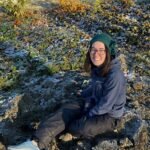
Nora S. Vaage (NO)
Philosopher / NOBA
Nora S. Vaage is a philosopher and scholar of art and media studies, with a PhD in philosophy of science and ethics. From this interdisciplinary perspective she writes and teaches on topics at the intersection between culture, society, and technology. She has for many years focused on bio- and eco art and biohacking. Her recent research focuses on the tensions of care and environmental media.
Read more: ParticipantsNora is associate professor at NTNU and Nord University, and Lead Researcher at NOBA: Norwegian BioArt Arena. She leads the work package Experiential Soils within the research project Anthropogenic Soils: Recuperating Human-Soil Relationships on a Troubled Planet (2022-28). She occasionally works as a curator

Becoming Species (DK)
ACTIVIST/ARTIST collective
Becoming Species is a performative, activist collective based in Copenhagen, exploring and criticizing the current climate emergency and biodiversity crisis on the limit between rebellion, protest and inspiration for future alternatives.
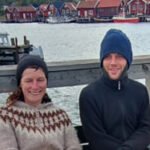
Gylleboverket: Etta Säfve & Jona Elfdahl (SE)
Artists
Gylleboverket is an artist group that works with site-specific installations, performance, sound, video and ritual investigations. They work with built-up worlds, often of natural materials, myths, rites and stage installations. They also run the platform Gylleboverket – a platform for contemporary art, film and permaculture, where they explore artistic strategies and permaculture as a tool to understand what it is to be human and work in the world with care for the earth, the more-than-human and each other.
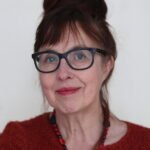
Merja Markkula (FI)
BIOLOGIST / ARTIST
Merja Markkula has always been eager to become absorbed in new challenges. She first studied biology, agriculture, and experimental embryology. As a scientist she worked in several universities studying reproduction. Twenty years ago she left science and devoted to art, using mainly, but not only, textile materials. Chorus sinensis costumes are designed by her.
Merja Markkula has always been eager to become absorbed in new challenges. She first studied biology, agriculture, and experimental embryology. As a scientist she worked in several universities studying reproduction. Twenty years ago she left science and devoted to art, using mainly, but not only, textile materials. Chorus sinensis costumes are designed by her. Ten years ago, National board of antiquates closed the museum in Kuusisto manor in West Coast of Finland. She realized that the valuable cultural history of Kuusisto surroundings, if presented as an equal partner with contemporary art, could have unique, internationally important potential. Since then she dedicates her time for curation of exhibitions and guidelines in Kuusisto Art Manor.
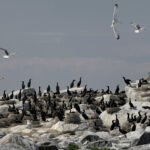
Great Cormorant (Phalacrocorax carbo sinensis)
Seabird
Us cormorants are a bird species living in most parts of the planet’s marine areas and other waterways. We like living in big colonies together with folks of our kind. Sometimes other sea birds live together or near to our colonies, and we support each other’s lives. In Finland we mostly occupy outer and rocky sea islands where no one else likes living. We enjoy the open skies and the fresh sea breeze and mostly eat small fish such as perches and roaches which we catch by diving.

Whooper Swan (Cygnus cygnus)
Anatidae BIRD
We spend much of our time swimming, straining the water for food, or eating plants that grow on the bottom. We have a honking sound, a bit like geese, and despite being amongst the heaviest, flying birds we migrate hundreds or even thousands of miles to our wintering homes in southern Europe and eastern Asia. We mate for life and equality is important in our families. We share the nesting work. We used to be in serious trouble because of human persecution, but due to bans for killing us and stealing our eggs we now have fairly good populations, especially in Finland, where we’re also the national bird! We have inspired a lot of art, from music to dance and literary works.
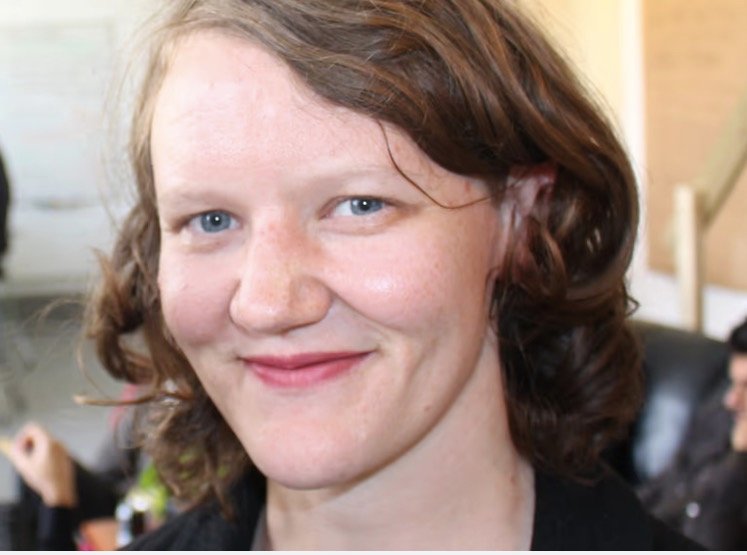
Camilla Fagerli (NO)
ARTIST/CURATOR
Camilla Fagerli is an artist, cultural worker and curator living in Tromsø. Fagerli is artistic and general manager of Tromsø Centre for Contemporary Arts. She is educated at Nordland Art and Film School in Kabelvåg, and the art academies in Tromsø and Copenhagen. Her practice is mostly part of collectives and collaborations, and has in recent years been driven by questions related to how we can redefine societal and institutional structures in a direction that better corresponds to the democratic values we like to claim we have. Camilla and Kåre initiated and curated the exhibition I Love Seagulls and have been involved in the Kittiwake hotell collaboration on the behalf of Tromsø Centre for Contemporary Arts.
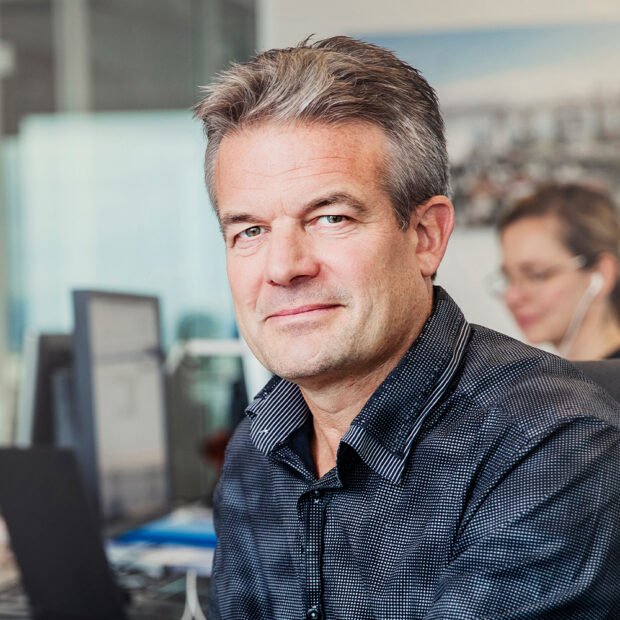
Kjeld Nash (NO)
ARCHITECT
Civil architect with 32 years of experience for both private and public sectors. Kjeld has for the past 12 years been involved in zoning work in addition to projects such as detached houses, cabins, larger residential projects, commercial buildings, cultural buildings, exhibition architecture and installation projects in public spaces. On behalf of Tromsø Municipality, he has collaborated with Lawrence Malstaaf and Kåre Grundvåg on the design of the kittiwake hotels in Tromsø.
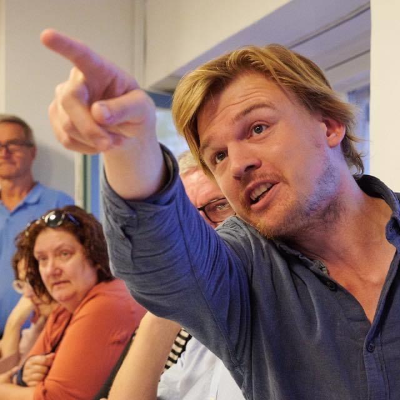
Nikolaj Noel Christensen (DK)
researcher
Nikolaj is educated in educational science with a specialisation in management, natural philosophy and Education for Sustainable Development (UBU). His gaze is sharply focused on the space between nature policy and sustainability throughout society, including in relation to educational policy issues. His great interest in natural politics locally and nationally has resulted in a commitment to the Danish Ornithological Society regarding the political discussion on urban development in Copenhagen.
A commitment that has also secured him a large and strong network across the green agenda. When Nikolaj does not participate in the nature policy and sustainable agenda, time passes mainly with life with birds and the dissemination of birds in many contexts.
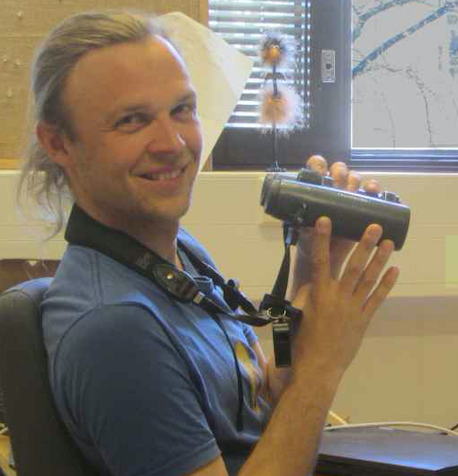
Aleksi Lehikoinen (FI)
BIOLOGIST
Aleksi Lehikoinen is an Academy Research Fellow and curator at LUOMUS and adjunct professor (Ecology and evolutionary biology, University of Helsinki). He has led his own research group, the Helsinki Lab of Ornithology since 2013, and he has nine years of experience of independent scientific research.

Nana Francisca Schottländer (DK)
Artists
Nana Francisca Schottländer is a transdisciplinary artist working with choreography, visual arts and performance as practice-based research exploring collaborative creation and intimate dialogues between human and more-than-human worlds and bodies
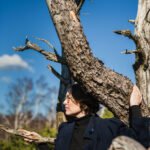
Pernilla Ljungkvist (SE)
ARTIST
Pernilla Ljungkvist’s work is conceptual with performance, text, sound and participatory processes as the main material, along with influences from various mind-expanding practices butoh, meditation and yoga. Her artistic practice moves in the borderland between social experiments, pseudo science and often examines existential issues based on personal stories.
.

Eider duck (Somateria Molissima)
SEABIRD
The eider is a diving duck that lives in polar regions of the northern hemisphere. For centuries our species have collaborated with humans. Human archaeologists have found traces of our species in Stone Age landfills and mapped on rock carvings in northern Norway. Remains of our down have also been found as duvet filling from later times, including the Oseberg find, dated to around the year 800.
Humans help us build our nests and look after us during the nesting period. In return we generously share our soft down when our chicks have hatched. We have had this collaboration for thousands of years all along the coast of Norway, the Barents Sea and Iceland. Sadly, in the last 50 years humans have largely stopped this tradition. Because of the lack of food and undisturbed places for us to live and breed, our numbers have plummeted. We are now only 20% of the population we were 40 years ago.
www.npolar.no/
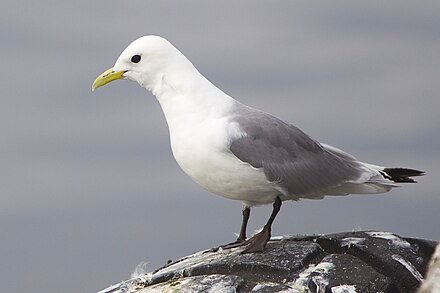
Kittywake (Rissa tridactyla)
seaBIRD
Traditionally we used to be seabirds living in colonies on cliffs in the ocean, eating the fish on the surface of the waters. When finding a mate we are together for life, and we are all for equal rights and both help with the nesting and feeding and bringing up our chicks. Because of climate change and other human caused interference the food source dried up and a lot of us are now refugees, seeking new homes as urban dwellers. We are a declining population, on the red list. Most humans don´t like our songs and chattreings and find us a nuisanse in the city, but some of them are very understanding and are helping us by building new, artificial cliffs for us. We appreciate the effort and try to adapt as city dwellers.
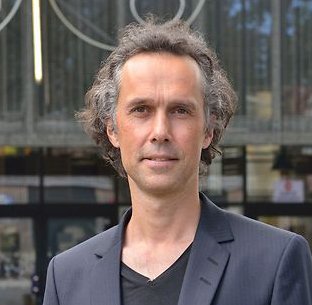
Lewrence Malstaf (BE/NO)
Artist/Designer
Lawrence Malstaf’s practice crosses boundaries between art, design and scenography.
He shows his work both in Norway and internationally and has received several international awards in art and new technology. Lawrence has worked on the design and physical layout of the kittiwake hotels since the beginning of the collaboration. Lawrence holds an MA from Antwerp and lives and works in Tromsø.

Anniken Førde (NO)
Professor
Anniken Førde is a professor of social planning at the University of Tromsø. In her research she focuses on changing places and landscapes, with a particular focus on coastal communities. In recent years, she has been interested in multi-species place development, and is part of the research team at FUGLAN VEIT (The Birds Know).

Sergey Simonov (RU)
BIOLOGIST Researcher
Sergey Simonov is an ornithologist, PhD of Laboratory for Zoology, Institute of Biology, Karelian Research Centre, Russian Academy of Sciences. During his 12 years of work experience, he has coordinated and successfully realised series of research projects supported by different organizations. Simonov uses traditional methods and actively implements the interdisciplinary approach in ornithology. He also collaborates with artists in art & science projects.
www.krc.karelia.ru
